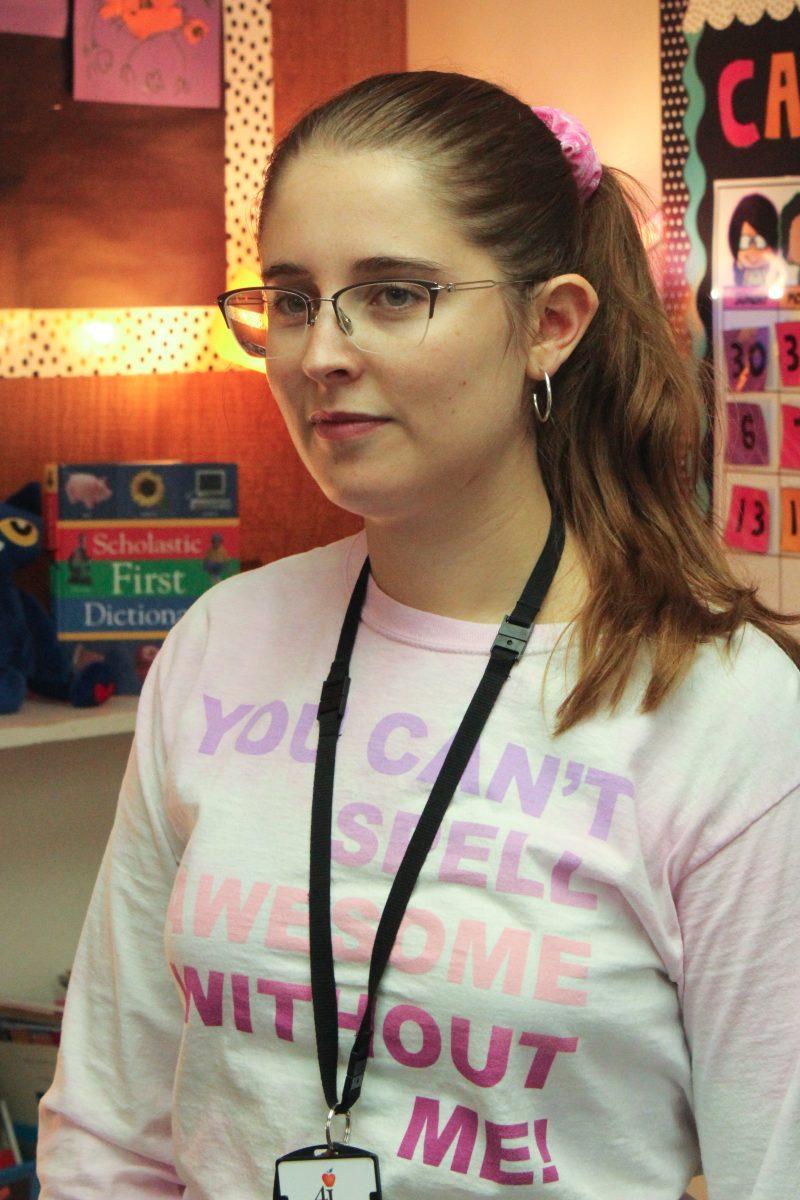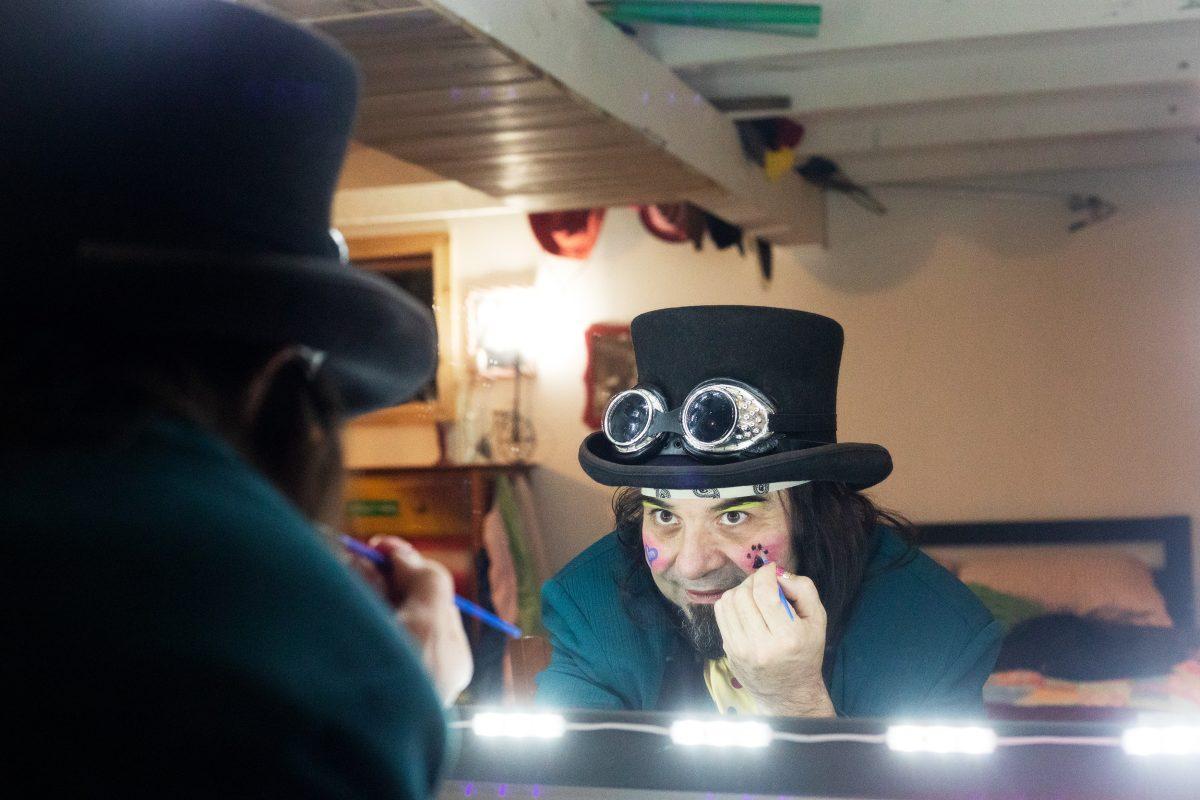At 6:30 a.m., Christina Wagner walks into Awbrey Park Elementary to start preparing for her first grade class. Alyssa Nelson, another first grade teacher, arrives by 7:00 a.m. and makes sure her students have everything they need at their desks for the day. By 8:20 a.m. the two teachers stand at their doors and greet their students as they walk into the classrooms, ready to start by 8:30 a.m.
The day is nonstop after that. The classrooms have attendance, the good morning song and the question of the day. From there, they go into foundation lessons, then split into reading groups, recess, math time, music or physical education – depending on the day – and lastly, either science, art, social studies or health. The two are on their feet all day, walking around the amount of steps one would at Disneyland.
Wagner and Nelson’s contract says they have to be on school grounds from 8:00 a.m. to 4:00 p.m., Monday through Friday. But most days, they are there at least an hour early, don’t leave till 5:00 p.m., bring work home with them and then come in for a couple of hours on Sundays.
“I literally couldn’t get stuff done in the amount of time I’m given,” Nelson says. “That is just one level of exhaustion: just always working, all the time.”
Overworked, underpaid and understaffed, teachers are constantly fighting an uphill battle through the school year. According to RAND Corporations – a nonprofit research organization dedicated to helping improve public policy challenges – 59% of teachers experience burnout and 73% of teachers experience frequent job-related stress.
During the pandemic, teachers were doing their jobs over Zoom, trying their best to give their students the best education possible. Being back in-person has brought challenges some teachers weren’t prepared for. These include children not being able to sit for long periods of time, kids not being prepared for the grade they are entering and general behavioral issues.
Wagner and Nelson are just two teachers in the system trying to stay afloat. The two best friends met back in August 2021, when they both started their first teaching jobs at Awbrey Park Elementary. They care a lot about their students, but they are tired of administration and the community not listening to them.
“The burnout really comes from not being heard,” Wagner says. “Like no matter what we say or beg for or do, our needs are not being met.”
Wagner says she spends about $75 a month for her students’ snack time. Teachers can ask for parents and others to donate snacks and other materials to the classroom, but whatever isn’t provided, it’s usually the teachers who pay.
Both Nelson and Wagner spend a lot of their own money on materials for their class. Some things they get donated from their teacher friends or the community, especially books. On the back wall of Nelson’s room is a bookshelf filled with 1,000 books that were either gifted to her by other teachers or thrifted. Wagner just received 2,000 books from her aunt who retired from teaching.
Both Nelson and Wagner grew up in families of teachers; it’s in their blood. Wagner says she knew she wanted to be a teacher “since she was seven,” but it took her some time to get there.
As a mom of four, Wagner, 37, did not go to college until she was 34. She was a stay-at-home mom for many years, then an education assistant at her kids’ schools. Wagner saw the impact teachers could make in students and she knew it was time to take the leap.
“I was just really drawn to the fact that teachers have this power to create a community, and I saw that even as a kid,” Wagner says. “I wanted to be the one who had that power to do that.”
Since Nelson was a young girl, she knew she wanted to be a teacher as well. Her dad is a middle school band teacher and her mom was an education assistant and is now a SPED coordinator, so it has always been a part of her life.
She attended the University of Oregon and started as just a Spanish major. Nelson says she kept telling people that she wanted to teach at a “Spanish immersion school,” which made her realize that she “should switch to an education major.”
While Nelson did all of her student teaching through Zoom, Wagner got to go back in-person for a little bit. Once they finished their one year of student teaching, the two were ready to enter the classroom. Both Nelson and Wagner applied to be teachers back in the spring of 2021. That’s when they both got the job at Awbrey Park Elementary.
Nelson’s first year teaching was not a walk in the park. For starters, Nelson couldn’t find an apartment in Eugene, so she would commute from Albany every day.
“I had all this stuff planned and we got through probably two of the things,” Nelson says. “I didn’t realize how much time transitions take, it was just really new.”
During Nelson and Wagner’s first year of teaching, they dealt with problems of having to reteach kindergarten-level concepts to their students as they all did that grade over Zoom. Now they’re dealing with behavior management, and it’s overwhelming.
Through the months of January 2022 to May 2022, the School Pulse Panel – a study under the National Center for Education Statistics that collects information on the impacts of the COVID-19 pandemic on education – sent surveys to 800-850 public schools measuring the impact of COVID-19 within schools. In their surveys, they found that more than 80% of public schools reported “stunted behavioral and socioemotional development because of the pandemic.” The surveys also found that there is a 56% increase in “classroom disruptions from student misconduct.”
In her first year of teaching, Nelson never had to do a room clear. A room clear is done when a student is making a classroom unsafe for the rest of the students or teacher and all students leave the room until it is safe to reenter. There was a week in October, though, where she did a room clear every single day. Children throwing chairs and scissors and flipping tables are just some of the things Wagner and Nelson have experienced.
Teachers will call a special education teacher to help the child during a situation like this. Venus Reeve is one of the special education teachers at Awbrey Park Elementary. Reeve started teaching all the way back in the mid-90s and has taught everything from high school to elementary school.
Being a special education teacher, though, has a special place in her heart.
“It’s just always been a part of me to want to work with all children,” Reeve says, “but especially those who aren’t given the same advantages and who don’t have the same appreciation from our society.”
When it comes to helping her students and teachers who have children who are struggling in the classroom, Reeve believes a leading factor to children acting out is that during the pandemic there were certain rules they didn’t experience because they weren’t in a classroom setting. They weren’t having to sit in chairs as long, they were having loads of screen time and they weren’t having to share their toys.
Going into teaching, the two first grade teachers knew they would experience burnout. “I didn’t fully understand it till I was here,” Nelson says. “I try to go into everything with a positive mindset, but it definitely has been more overwhelming than I was ready for.”
For future teacher Kelley Reade, burnout is something she has had to start preparing for. Reade is currently a part of the UO’s masters program, where she is doing her one year of student teaching.
“I’ve definitely heard a lot about burnout from teachers,” Reade says. “You know you see Instagram accounts online literally titled ‘burnt out teachers,’ and I even saw it with some of my teachers in high school. There’s just not as much of that spark anymore.”
She knows burnout can especially be a problem when schools don’t have supportive administrators and staff. Reade is trying to be proactive about dealing with burnout by highlighting the little accomplishments throughout her day and finding a supportive group among other teachers.
“Physically, mentally and emotionally exhausting” is how Nelson and Wagner describe burnout. “When they all hit at once, that’s a bad week,” Wagner says.
Reeve is also having her fair share of challenges in her position. At the age of 47, Reeve worries for her physical health as she says she is “stressed every single day.”
“I struggle because, at some point, I have to take care of my family,” Reeve says. “At some point, I can’t keep sacrificing my family’s time, my family’s future, my family’s financial security.”
When it comes to funding, money is a problem, specifically regarding special education. The federal government is supposed to give 40% in addition to the average per student cost for each special education student. In reality, according to the National Education Association, the government provides less than half of that funding amount for special education students. Of the 7.4 billion dollars the state of Oregon spends on K-12 education, 18% of that is from the federal government. The average amount of money given to each student in the state of Oregon is $12,450.
For Nelson, these first couple of months of the new school year have not been easy. While Nelson dealt with big personalities in her first year of teaching, this year has been worse.
She gives credit to the other teachers who support and encourage her, Wagner being one of them. When the two met, it didn’t seem likely that they would become friends. Now, they are each other’s best friends, and Wagner says they “bicker like an old married couple.”
As they navigate the school year, the two are making sure they are involved in their students’ lives. Both Wagner and Nelson try to go to their students’ soccer games, baseball games, dance recitals, cheerleading competitions and birthday parties.
“If you ask a six-year-old to come into school everyday and buy into and care about the things that I care about as a teacher, I had better be willing to buy into and care about whatever it is that they care about,” Wagner says.
They both hope that in the future, people realize how important it is to support schools. Wagner also hopes that teachers are paid their worth.
“We are severely underpaid,” Wagner says. “I have a bachelors and a masters, and I could make the same amount of money at Taco Bell.”
While Wagner and Nelson may be working almost 11 to 12 hours a day, they keep coming back for their students. They know it may not be easy, but they have each other and a job they love.
“This is what I will do for the rest of my life. It took me 30 years to get from ‘Oh, I have this dream’ to ‘Oh, I’m doing this.’ I will do this forever,” Wagner says. “It’s truly about the children for me and none of the burnout is their fault.”
Alyssa Nelson is a recently-hired first-grade teacher at Awbrey Park Elementary School.









![[Photo Courtesy of the Lara Family]
Ruben embraces his beloved childhood goat, Katrina.](https://ethos.dailyemerald.com/wp-content/uploads/2025/05/katrina-1-1060x1200.jpg)


